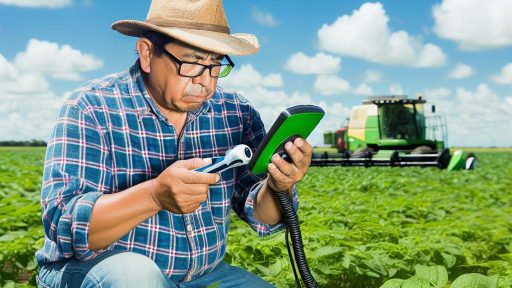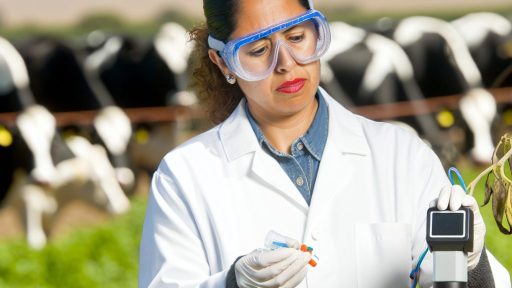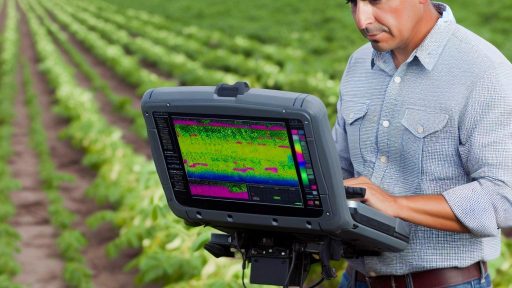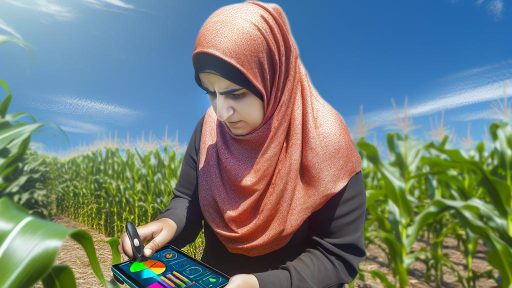Introduction to Automated Irrigation Systems
Automated irrigation systems revolutionize farming practices.
They utilize technology to optimize water usage.
Farmers can enhance crop production efficiency.
Additionally, these systems reduce labor costs significantly.
Modern systems often feature real-time monitoring.
This capability allows farmers to make informed decisions.
Implementing automation helps in conserving water resources.
Moreover, it minimizes waste during the irrigation process.
Farmers can adjust the irrigation schedules easily.
These systems can adapt to weather changes swiftly.
Consequently, crops receive the right amount of water.
This consistency fosters healthier plant growth.
Automated systems apply water precisely where needed.
As a result, the risk of over- or under-irrigation diminishes.
Farming operations can increase productivity without expanding land.
Transform Your Agribusiness
Unlock your farm's potential with expert advice tailored to your needs. Get actionable steps that drive real results.
Get StartedUltimately, automated irrigation supports sustainable agriculture.
Overview of Traditional Irrigation Methods and Their Limitations
Common Traditional Irrigation Techniques
Farmers have utilized various traditional irrigation methods for centuries.
Surface irrigation is one of the oldest techniques used.
This method involves water flowing over the soil surface.
It relies heavily on gravity to distribute water evenly.
Another common method is drip irrigation, which delivers water directly to plants.
Although efficient, it requires significant manual setup and maintenance.
Farmers also use sprinkler systems to mimic rainfall.
These systems distribute water through pipes and sprinkler heads.
While effective, they often waste water through evaporation and runoff.
Limitations of Traditional Irrigation Methods
Traditional methods face several limitations in effectiveness.
First, they require substantial manual labor to operate.
This labor intensity can burden farmers and limit productivity.
Second, traditional systems often lead to uneven water distribution.
This unevenness results in overwatering some areas while under-watering others.
Consequently, crop yields may suffer due to water stress.
Additionally, reliance on rain can create further challenges.
Farmers may struggle during periods of drought or excessive rainfall.
This variability can hinder consistent crop growth and yield.
Environmental Impact Considerations
Traditional irrigation methods can negatively affect the environment.
For instance, surface irrigation often leads to soil erosion.
This erosion can degrade land productivity over time.
Furthermore, excessive water usage can deplete local water sources.
This over-extraction risks long-term sustainability for agriculture.
Showcase Your Farming Business
Publish your professional farming services profile on our blog for a one-time fee of $200 and reach a dedicated audience of farmers and agribusiness owners.
Publish Your ProfileAdditionally, runoff from irrigation may carry fertilizers and pesticides.
Such runoff can contaminate nearby waterways and ecosystems.
The Need for Modern Solutions
Given these limitations, modernization in irrigation is essential.
Adopting automated systems can offer numerous benefits.
These technologies can improve efficiency and conservation.
Additionally, they help mitigate environmental impacts.
Ultimately, embracing innovation is crucial for sustainable agriculture.
Efficiency Improvements: Water Conservation Through Automation
Enhancing Water Use Efficiency
Automated irrigation systems significantly enhance water use efficiency in agriculture.
They precisely deliver water to plants, reducing waste.
This technology minimizes overwatering and ensures optimal soil moisture levels.
As a result, farmers enjoy better crop yields.
Reducing Labor Costs
Automation in irrigation reduces the need for manual labor.
This leads to significant cost savings for farmers.
With less time spent on irrigation, workers can focus on other farming tasks.
Overall, this boosts productivity and profitability on farms.
About Real-time Monitoring
Automated systems often include sensors for real-time monitoring.
These sensors measure soil moisture and weather conditions accurately.
This technology allows farmers to make informed irrigation decisions.
Subsequently, they can adjust water delivery based on actual plant needs.
Adapting to Climate Variability
Automated irrigation systems help farmers adapt to changing climate conditions.
They can optimize water use during droughts or heavy rains.
Farmers can adjust schedules based on predictive weather analytics.
This flexibility is crucial for maintaining crop health and productivity.
Supporting Sustainable Practices
These systems promote sustainable agricultural practices.
By conserving water, farmers reduce their environmental impact.
Such practices ensure the longevity of water resources for future generations.
Moreover, sustainable practices can attract eco-conscious consumers.
Gain More Insights: Energy Efficiency Strategies for Agricultural Businesses
Cost Savings: Reduction in Labor and Resource Expenditure
Minimizing Labor Costs
Automated irrigation systems significantly reduce the need for manual labor.
Farmers invest less time on watering tasks, allowing them to focus on other activities.
Moreover, fewer workers are needed to manage irrigation, further cutting costs.
As a result, farms can redirect funds to more critical areas of operation.
Efficient Water Use
These systems optimize water usage based on real-time data.
This leads to lower water bills and environmental conservation.
Farmers can tailor irrigation schedules, ensuring plants receive appropriate moisture.
Consequently, they waste less water and reduce overall resource expenditure.
Enhanced Crop Yields
Automated irrigation contributes to healthier crops and higher yields.
Consistent watering promotes optimal growth conditions for crops.
Increased yields translate to more produce for market, enhancing profits.
Ultimately, this leads to a better return on investment for farmers.
Showcase Your Farming Business
Publish your professional farming services profile on our blog for a one-time fee of $200 and reach a dedicated audience of farmers and agribusiness owners.
Publish Your ProfileLong-Term Financial Benefits
Investing in automated systems often results in significant long-term savings.
While initial costs may be high, savings accumulate over time.
Farmers often experience a reduction in energy costs associated with irrigation.
Additionally, lower labor costs contribute to overall financial stability.
Gain More Insights: Precision Farming Techniques in Controlled Environment Agriculture
Enhanced Crop Yield and Quality
Precision Watering Techniques
Automated irrigation systems significantly improve crop yield and quality.
This improvement comes from precision watering techniques that optimize water usage.
Farmers can adjust watering schedules based on real-time data.
This data includes soil moisture levels and weather predictions.
As a result, plants receive the exact amount of water they need.
Consequently, overwatering and underwatering become less common.
Moreover, crop stress decreases, leading to healthier plants.
Healthier plants produce better yields and higher-quality produce.
These systems can apply nutrients along with water.
By integrating fertilization, they enhance nutrient uptake by plants.
This dual application saves farmers time and resources.
Additionally, automated systems reduce labor costs in the long run.
Farmers can focus on other important tasks, increasing overall efficiency.
Transitioning to automated irrigation also conserves water.
Water conservation benefits the environment and reduces costs.
When water is used efficiently, it minimizes waste and runoff.
This efficiency reduces the risk of soil salinization over time.
Furthermore, farmers gain insights through data analytics.
These insights inform better decision-making regarding crop management.
Ultimately, automated irrigation leads to sustainable agricultural practices.
Healthy crops and efficient resource use enhance the farming ecosystem.
Delve into the Subject: How To Choose The Right Agri-Fintech Solution For Your Farm Needs
Real-Time Monitoring
Incorporating Sensors
Automated irrigation systems utilize advanced sensors effectively.
These sensors continuously monitor soil moisture levels.
They provide critical data on environmental conditions.
Farmers receive real-time feedback on irrigation needs.
This constant monitoring reduces water waste significantly.
Data Analytics Integration
Data analytics plays a vital role in optimizing irrigation.
It processes data from various sensors intelligently.
Farmers can identify patterns and trends over time.
With insights, they can make informed irrigation decisions.
Remote Access Features
Modern systems offer remote access capabilities.
Farmers can control irrigation systems from anywhere.
This flexibility allows for timely interventions.
Consequently, it enhances overall crop health dramatically.
Showcase Your Farming Business
Publish your professional farming services profile on our blog for a one-time fee of $200 and reach a dedicated audience of farmers and agribusiness owners.
Publish Your ProfilePredictive Analysis Tools
Predictive analytics takes irrigation management further.
It forecasts irrigation needs based on weather data.
Farmers can plan ahead and schedule irrigation efficiently.
This proactive approach minimizes crop stress during dry spells.
Cost-Effectiveness
Integrating monitoring reduces operational costs substantially.
Farmers can allocate resources more effectively now.
Reducing water use also contributes to significant savings.
Thus, automated systems ensure long-term financial benefits.
Learn More: Future Trends In Genetically Modified Agricultural Technology
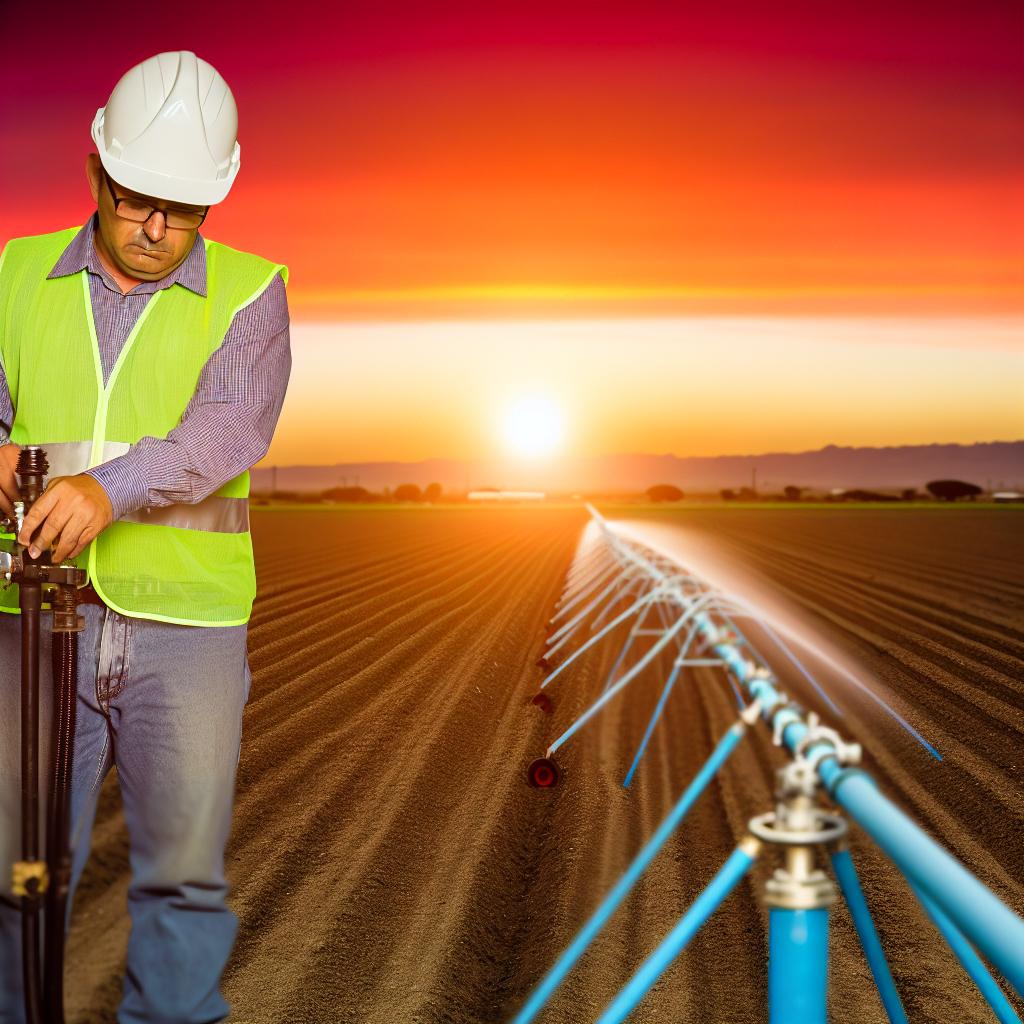
Environmental Impact: Sustainable Practices and Soil Health
Conserving Water Resources
Automated irrigation systems significantly conserve water resources.
They reduce water waste through precise application techniques.
As a result, farmers can optimize their water usage effectively.
This method promotes a sustainable approach to agriculture.
Enhancing Soil Quality
These systems contribute to improved soil health over time.
By delivering water directly to plant roots, they prevent waterlogging.
This practice maintains optimal moisture levels in the soil.
Healthy soil supports better crop growth and yields.
Minimizing Environmental Footprint
Automated irrigation reduces the overall environmental footprint of farming.
It lowers greenhouse gas emissions compared to traditional irrigation methods.
Farmers can use renewable energy sources to power these systems.
This shift further enhances sustainability in agricultural practices.
Supporting Biodiversity
Implementing these systems aids in preserving local ecosystems.
Farmers can manage water distribution to mitigate drought impacts.
This approach fosters a conducive environment for diverse plant species.
Additionally, increased biodiversity promotes resilience against pests.
Improving Crop Resilience
Automated irrigation systems lead to healthier crops overall.
Consistent moisture availability enhances crop resilience to stress.
Such resilience contributes to stable food production levels.
Ultimately, this approach supports agricultural sustainability.
Scalability: Integration in Small and Large-Scale Farming Operations
Advantages for Small-Scale Farmers
Automated irrigation systems benefit small-scale farmers significantly.
They optimize water usage and reduce labor costs.
Moreover, these systems are often easy to install and operate.
This adaptability allows small farmers to manage their resources effectively.
Consequently, small-scale operations can enhance crop yields.
Benefits for Large-Scale Farms
Large-scale farms gain efficiency through automated irrigation systems.
These systems facilitate large-area coverage and uniform watering.
In addition, they reduce waste by delivering precise water amounts.
As a result, large farms can save substantial amounts of water.
This efficiency is critical in regions with water scarcity.
Scalability of Technology
Automated irrigation technology scales effectively across different farm sizes.
Showcase Your Farming Business
Publish your professional farming services profile on our blog for a one-time fee of $200 and reach a dedicated audience of farmers and agribusiness owners.
Publish Your ProfileSmall farmers can start with basic systems and upgrade over time.
On the other hand, large farms can implement complex systems tailored to their needs.
This flexibility ensures that farms can adopt automation at their own pace.
Furthermore, as farmers expand, they can integrate additional technology seamlessly.
Cost-Effectiveness
Investing in automated irrigation proves cost-effective for all farm sizes.
Initial setup costs are often quickly offset by savings in water and labor.
Efficient water use leads to healthier crops and higher quality produce.
In the long run, this investment can significantly enhance profitability.
Therefore, both small and large operations can see tangible financial benefits.
Future Trends: Smart Farming and Technological Advancements in Irrigation
Embracing Smart Farming Techniques
Smart farming enhances agricultural practices through technological innovation.
This approach uses data-driven techniques to optimize irrigation.
Farmers can monitor soil moisture levels in real-time.
Additionally, they can automate irrigation schedules based on precise data.
Consequently, this helps reduce water wastage significantly.
Farmers also benefit from analyzing weather patterns for better planning.
Integration of IoT in Irrigation
The Internet of Things (IoT) revolutionizes irrigation management.
Smart sensors collect crucial data on soil conditions and crop health.
These sensors provide insights into moisture levels and nutrient deficiencies.
As a result, farmers can make informed decisions quickly.
Irrigation systems automatically adjust based on sensor data, ensuring optimal usage.
Furthermore, IoT integration leads to higher crop yields and quality.
Adoption of AI and Machine Learning
Artificial intelligence (AI) and machine learning rapidly transform irrigation practices.
Agricultural AI systems can predict irrigation needs through data analysis.
They analyze various factors like weather forecasts and soil analysis.
This predictive capability decreases manual labor and increases efficiency.
Moreover, AI can recommend the best irrigation schedules for different crops.
Utilization of Drones and Remote Sensing
Drones enable farmers to monitor vast areas of land efficiently.
They provide aerial imagery and data essential for irrigation management.
Remote sensing technology helps identify areas needing immediate attention.
This precision allows for site-specific irrigation adjustments.
Hence, farmers can manage resources more effectively and reduce waste.
Future Innovations in Irrigation Technology
Emerging technologies promise even greater advancements in irrigation.
For example, autonomous irrigation machines are on the rise.
These machines operate with minimal human intervention, reducing labor costs.
Additionally, sustainable practices are gaining traction.
Innovative systems focus on using alternative water sources.
Ultimately, these developments ensure the agricultural sector’s long-term viability.
Additional Resources
Irrigation & Water Use | Economic Research Service
Implementation of artificial intelligence in agriculture for optimisation …

